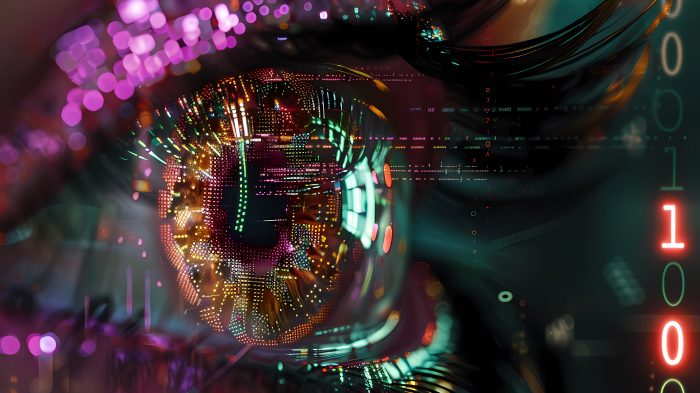Artificial intelligence (AI) has rapidly evolved from a niche technology to a transformative force across numerous industries. From healthcare to finance, AI is reshaping the way organizations operate, driving innovation and efficiency. One of the most critical areas where AI is making a profound impact is cybersecurity. As cyber attacks become more sophisticated, traditional defense mechanisms are often inadequate to keep up. AI offers new capabilities that are essential for detecting, preventing, and responding to these threats more effectively.
In the realm of cybersecurity, AI is not just an enhancement—it’s a game-changer. By leveraging machine learning, access management AI, entity behavior analytics, and other AI-driven techniques, organizations can identify threats more accurately, respond in real-time, and ensure their security operations are robust. However, with these advancements come new challenges and considerations. Understanding the role of AI in cybersecurity is essential for businesses and individuals alike. Staying informed about the latest AI developments and trends in cybersecurity can provide a competitive edge, helping to navigate the complexities of today’s digital landscape while staying ahead of potential risks. As AI continues to evolve, its influence on cybersecurity will only grow, making it vital to comprehend both the opportunities and challenges that come with it.
Table of Contents
- What is AI in Cybersecurity?
- How is AI Being Used for Cybersecurity?
- AI and Cybersecurity: How Artificial Intelligence is Revolutionizing the Security Industry
- How is Cybersecurity Different?
- What are the Disadvantages of Cybersecurity?
- What is the Main Challenge of Using AI in Cybersecurity?
- Can AI Be a Threat to Cybersecurity?
- What is Responsible AI in Cybersecurity?
- The Future of AI for Cybersecurity
- Staying Secure in a Changing AI Environment
- Conclusion
What is AI in Cybersecurity?
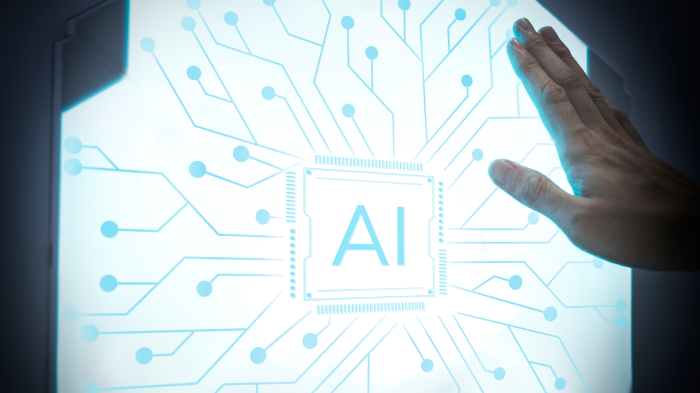
In the context of cybersecurity, artificial intelligence (AI) refers to the application of advanced algorithms and data-driven techniques to enhance the protection of digital systems against various threats. Unlike traditional cybersecurity measures, which rely heavily on rule-based approaches and predefined protocols, AI in cybersecurity utilizes adaptive learning and pattern recognition to detect and respond to threats in real-time. This allows AI systems to identify potential risks that may not be obvious through conventional methods, especially as cyber security threats grow in complexity and scale.
One key difference between AI-driven cybersecurity and traditional methods lies in the level of automation and accuracy that AI can provide. Traditional cybersecurity typically involves manually setting up defenses, like firewalls and antivirus software, which are effective against known threats. However, these methods often struggle to keep up with new, unknown threats or to analyze massive volumes of data quickly. AI, on the other hand, can process vast amounts of data at high speeds, identify patterns, and adapt to new types of attacks without direct human intervention. This makes AI particularly valuable for detecting zero-day exploits and other sophisticated threats that evade traditional defenses.
Several AI techniques are instrumental in modern cybersecurity. Machine learning, for example, enables systems to learn from past security incidents and continuously improve their accuracy in identifying threats. Behavioral analysis is another powerful tool, as it allows AI to establish a baseline of normal network activity and then detect deviations that may indicate suspicious behavior. Other techniques, such as natural language processing (NLP) and deep learning, are also being used to enhance cybersecurity. NLP helps AI analyze textual data, such as phishing emails, to identify malicious intent, while deep learning models can process and analyze complex data structures, improving threat detection capabilities.
Work with Our
24/7/365 Cyber Team
How is AI Being Used for Cybersecurity?
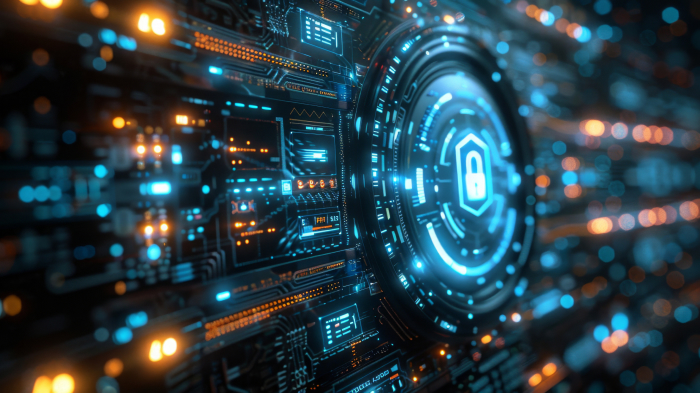
AI is transforming cybersecurity by enabling faster, more accurate, proactive threat detection and response. Through various applications, AI enhances the ability to monitor network traffic, detect anomalies, automate responses, and predict vulnerabilities before they can be exploited. These capabilities help organizations address cyber threats in real-time, often preventing attacks before they cause damage.
One of the primary applications of AI in cybersecurity is threat detection. AI-powered systems can analyze vast amounts of data from multiple sources, identifying potential threats much faster than traditional methods. For example, AI can sift through network logs and user behavior data to spot unusual activity, such as unauthorized access attempts or abnormal data transfers, that could signal a breach. By identifying these patterns early, AI helps organizations respond to threats before they escalate.
Another key application is anomaly detection, which involves identifying deviations from normal network behavior. AI systems can establish a baseline of regular activity and continuously monitor for deviations that may indicate a cyberattack. For instance, if an AI system detects an unusual spike in network traffic or an attempt to access restricted files, it can flag these as potential threats. Anomaly detection is particularly valuable for identifying advanced persistent threats (APTs), which often go unnoticed by traditional security measures.
Response automation is also a significant AI application in cybersecurity. Once a threat is detected, AI can automate specific responses, such as isolating affected systems, blocking suspicious IP addresses, or notifying security personnel. By automating these actions, organizations can respond to incidents quickly, reducing the potential for damage and limiting the spread of attacks.
AI and Cybersecurity: How Artificial Intelligence is Revolutionizing the Security Industry

Artificial intelligence is reshaping the cybersecurity landscape by introducing unprecedented levels of accuracy, efficiency, and adaptability. Traditional cybersecurity methods have long relied on static defenses like firewalls and rule-based detection systems, which are effective against known threats but often fall short when it comes to identifying and responding to new, sophisticated attacks. AI, however, offers a dynamic and proactive approach, allowing organizations to stay ahead of evolving cyber threats.
One of the most significant advantages of AI in cybersecurity is its ability to enhance accuracy. Traditional methods can generate numerous false positives, requiring human intervention to determine whether an alert is a genuine threat. AI-driven systems, on the other hand, utilize machine learning algorithms to continuously refine their detection capabilities. By learning from past incidents and analyzing vast datasets, AI systems can reduce false positives and identify threats with greater precision. This accuracy helps security teams focus on actual threats, rather than wasting time on benign alerts.
In addition to accuracy, AI improves efficiency by automating routine tasks and enabling faster response times. Traditional cybersecurity often involves manual monitoring and analysis, which can be labor-intensive and time-consuming. AI can automate these processes, from scanning for vulnerabilities to responding to threats. For example, AI-driven systems can instantly recognize a malware infection and take immediate action to quarantine the affected system, stopping the spread of the threat before it can cause significant damage. This rapid response capability is essential in today’s fast-paced digital environment, where even a few minutes of delay can lead to severe consequences.
AI also brings a new level of adaptability to cybersecurity. Traditional defenses are typically rule-based, meaning they can only address threats that match predefined criteria. This makes them less effective against novel attacks or those that evolve over time. AI-driven cybersecurity systems, however, can learn from each encounter and adapt to new threat patterns. For instance, as cybercriminals develop new techniques, AI can recognize these emerging patterns and adjust its defenses accordingly. This adaptability ensures that organizations are prepared to face new challenges without constant manual updates to security protocols.
Talk to Our Dedicated
Engineering Team
How is AI Cybersecurity Different?
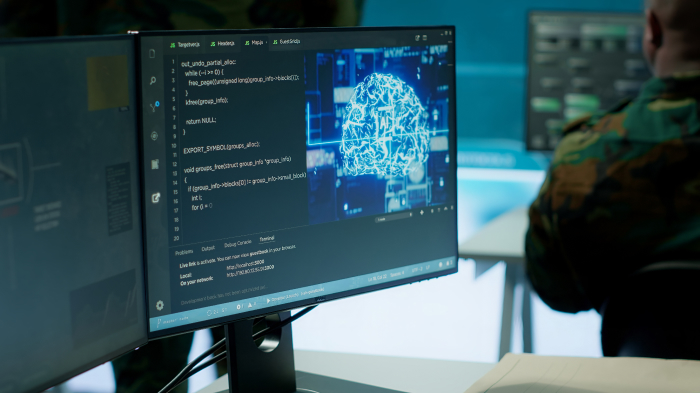
AI cybersecurity stands out from traditional methods due to its advanced capabilities, such as predictive analytics and adaptive learning. Unlike static security systems, which rely on predefined rules, AI-powered cybersecurity solutions can anticipate potential threats and continuously evolve to address new attack vectors. These unique aspects allow AI to detect, respond to, and even prevent cyber incidents with a level of precision and flexibility that manual methods cannot achieve.
One of the defining features of AI in cybersecurity is its predictive capability. By analyzing historical data and identifying trends, AI systems can forecast potential threats before they materialize. For example, if a pattern indicates an increased likelihood of phishing attacks targeting a specific sector, AI can proactively alert security teams to bolster defenses in those areas. This predictive power enables organizations to take a proactive stance, strengthening their defenses ahead of time and reducing their vulnerability to emerging threats.
Adaptive learning is another key differentiator. AI-driven cybersecurity tools are designed to learn from each interaction, adapting to new information and refining their detection algorithms over time. This learning process allows AI systems to become more accurate in identifying threats as they process more data, unlike traditional methods that remain static until manually updated. For instance, if AI detects a new type of malware that deviates slightly from known patterns, it can adjust its parameters to recognize similar threats in the future. This adaptability is essential for responding to the constantly changing tactics of cybercriminals.
What are the Disadvantages of AI in Cybersecurity?
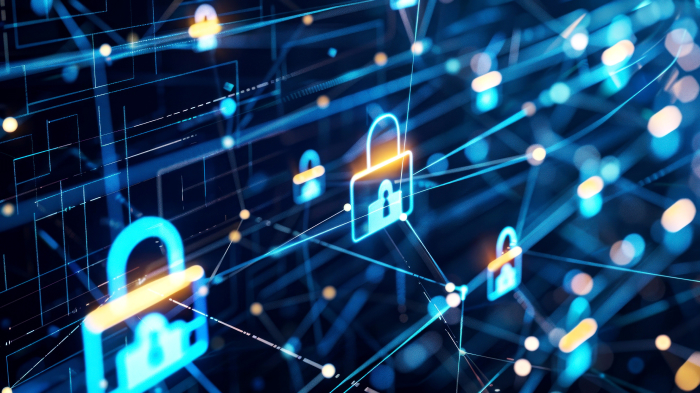
While AI brings numerous benefits to cybersecurity, it is not without its challenges. Several potential drawbacks can impact the effectiveness and practicality of AI-driven cybersecurity solutions. Key concerns include high costs, dependence on data quality, complexity, false positives, and the risks of over-reliance on AI. Understanding these limitations is crucial for organizations to make informed decisions about incorporating AI into their security strategies.
High Costs
Implementing AI in cybersecurity often involves substantial upfront costs. AI systems require powerful hardware, advanced software, and skilled security professionals to manage and maintain them. Additionally, these systems may need regular updates and training to stay effective against evolving threats, further adding to operational expenses. For smaller organizations with limited budgets, the costs associated with AI can be prohibitive.
Dependence on Data Quality
AI’s effectiveness in cybersecurity largely depends on the quality of data it analyzes. If the data fed into the AI system is incomplete, outdated, or biased, the system’s accuracy and reliability can be compromised. Poor data quality may lead to incorrect threat assessments, which can either miss actual threats or flag benign activities as suspicious. Ensuring high-quality, relevant data is essential for AI systems to perform accurately, but achieving this can be a significant challenge, especially for organizations that lack robust data management practices.
Complexity
AI systems can be complex to implement and operate, requiring specialized knowledge in machine learning, data science, and cybersecurity. This complexity can create a steep learning curve for security teams and may necessitate training data. Additionally, as AI systems evolve, they can become “black boxes,” where the reasoning behind their decisions becomes difficult to interpret. This lack of transparency can make it challenging for organizations to understand and trust AI-driven recommendations.
Work with Our
24/7/365 Cyber Team
What is the Main Challenge of Using AI in Cybersecurity?

While AI offers powerful capabilities for enhancing cybersecurity, its implementation is accompanied by several significant challenges. These include data privacy concerns, AI bias, and the need for specialized talent. Each of these challenges can impact how effectively AI is adopted and utilized, affecting both its performance and the trust organizations place in AI-driven solutions.

Data Privacy Concerns
AI in cybersecurity relies on vast amounts of data to train algorithms and detect threats. However, this heavy dependence on data raises concerns about privacy, especially when handling sensitive information. To function effectively, AI systems often require access to personal and organizational data, which can expose individuals and businesses to privacy risks. For example, data breaches within an AI system could lead to the unauthorized disclosure of private information, compromising security rather than enhancing it. These privacy concerns can hinder the adoption of AI, as organizations must balance the benefits of AI-driven cybersecurity with the need to protect sensitive data and comply with regulations like GDPR and CCPA.

AI Bias
Another major challenge in using AI for cybersecurity is the issue of bias. AI systems learn from historical data, which may contain biases reflecting past human decisions or systematic inequalities. If an AI model is trained on biased data, it can produce skewed results, potentially leading to unfair or inaccurate threat assessments. For example, if an AI system is trained on data that predominantly represents certain types of threats, it might overlook others, leaving some vulnerabilities unaddressed. This lack of objectivity can undermine the effectiveness of AI in cybersecurity and lead to misdirected security measures.

Need for Specialized Talent
Deploying and managing AI in cybersecurity requires a high level of expertise in machine learning, data analysis, and cybersecurity protocols. However, there is a shortage of professionals with the requisite skills to develop, maintain, and optimize AI-driven cybersecurity systems. This talent gap can be a significant barrier to adoption, especially for smaller organizations that may struggle to compete with larger companies for skilled personnel. Without the necessary expertise, organizations may face challenges in correctly configuring and interpreting AI systems, potentially reducing their overall effectiveness.
Can AI Be a Threat to Cybersecurity?
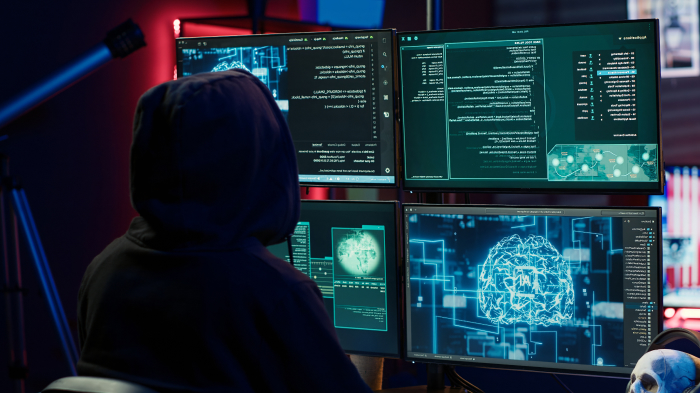
While AI is a powerful tool for defending against cyber threats, it can also be wielded as a weapon by cybercriminals. As AI technology advances, it is increasingly being used to develop AI-driven attacks and automated hacking tools that can evade traditional defenses and launch sophisticated attacks. Additionally, the use of AI in cybersecurity introduces potential vulnerabilities that adversaries can exploit, such as adversarial attacks, where attackers manipulate AI systems to their advantage.
AI-Driven Attacks and Automated Hacking Tools:
Cybercriminals are harnessing AI to enhance the effectiveness and efficiency of their attacks. For instance, AI can be used to create automated hacking tools that can conduct reconnaissance, find vulnerabilities, and exploit them at scale. These security tools can adapt to their environment, learning from each failed attempt to improve their methods. Such automation allows cybercriminals to launch large-scale attacks with minimal human intervention, increasing the speed and volume of attacks.
One example of AI-driven cybercrime is spear-phishing attacks, where AI analyzes vast amounts of data from social media and other public sources to craft highly personalized phishing emails. By mimicking the language and style of a trusted contact, AI-generated phishing attempts can deceive even the most vigilant recipients. AI can also be used in malware development, creating polymorphic malware that can change its code to evade detection, making it much harder for traditional cybersecurity systems to identify and neutralize.
Adversarial Attacks and AI Vulnerabilities:
As organizations adopt AI for cybersecurity, they also introduce new vulnerabilities that cybercriminals can exploit. One such vulnerability is adversarial attacks, where attackers manipulate input data to deceive AI systems. For example, attackers can subtly alter the data fed into an AI model, causing it to misclassify or overlook malicious activity. In cybersecurity, this could mean tricking an AI system into recognizing malicious code as benign, allowing it to bypass detection and infiltrate systems undetected.
Adversarial attacks exploit the fact that AI systems often function as “black boxes,” with complex algorithms that are difficult to interpret. Attackers can exploit these blind spots, crafting inputs specifically designed to confuse or mislead AI models. For instance, an attacker might introduce noise into network traffic data, causing the AI system to misinterpret unusual patterns as normal behavior, thereby concealing an ongoing attack.
The Dual Nature of AI in Cybersecurity:
The dual use of AI in both defense and offense highlights the need for a cautious approach to AI implementation in cybersecurity. While AI can enhance security, it also creates new attack surfaces that cybercriminals are eager to exploit. Organizations must therefore remain vigilant, combining AI-driven defenses with robust security practices that include human oversight. Regular audits, ongoing monitoring, and adversarial testing are essential to identify and address vulnerabilities within AI systems.
In summary, AI can be both a powerful asset and a potential threat to cybersecurity. As cybercriminals continue to develop AI-driven tools, the importance of understanding and defending against AI-specific threats becomes even more critical. By recognizing the risks and preparing accordingly, organizations can better protect themselves against the potential misuse of AI in the cybersecurity landscape.
Your Dedicated IT & Cybersecurity Team
What is Responsible AI in Cybersecurity?
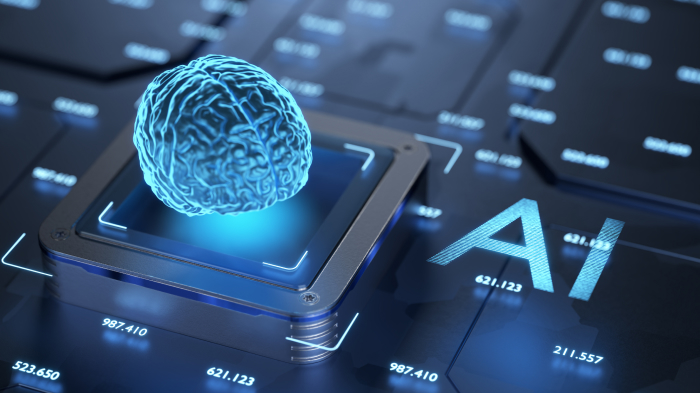
Responsible AI in cybersecurity refers to the development and deployment of AI systems that adhere to ethical principles and prioritize transparency, security, fairness, and accountability. As AI becomes increasingly integral to cybersecurity, ensuring that these systems are used responsibly is crucial to building trust and mitigating potential risks. Responsible AI goes beyond technical performance to consider the broader impact of AI on society, emphasizing ethical considerations that guide how AI technologies are applied and managed.
Ethical Considerations and Transparency:
A key aspect of responsible AI is the ethical consideration of how AI systems affect individuals and organizations. Transparency is essential to responsible AI, as it allows users to understand how decisions are made and ensures that AI systems can be held accountable. For example, an AI-powered cybersecurity tool should provide insights into how it identifies threats, enabling security teams to understand the reasoning behind its decisions. This transparency fosters trust, as users can be confident that AI systems are operating with integrity and that their actions are explainable.
Security, Fairness, and Accountability:
Developing AI systems that are secure, fair, and accountable is vital for responsible AI in cybersecurity. Security is paramount, as AI systems themselves must be safeguarded against manipulation or exploitation by adversaries. This includes implementing robust defenses against adversarial attacks and ensuring that AI models are resilient to tampering. Additionally, AI systems must be designed with fairness in mind, meaning they should not introduce or amplify biases that could lead to unjust outcomes. In cybersecurity, this translates to ensuring that threat detection algorithms do not disproportionately impact certain users or overlook particular types of threats due to inherent biases in the data.
Regulations and Guidelines for Ethical AI Usage:
The rapid advancement of AI has prompted calls for regulations and guidelines to govern its use, especially in sensitive areas like cybersecurity. Establishing clear regulations helps ensure that AI systems are developed and used in ways that protect users’ rights and promote ethical standards. For example, regulations could mandate regular audits of AI-driven cybersecurity tools to verify their compliance with privacy and security standards. Guidelines may also emphasize the importance of data governance practices, such as ensuring that AI models are trained on diverse, representative datasets to minimize bias.
The Future of AI for Cybersecurity

As AI continues to evolve, its role in cybersecurity is poised to expand significantly, introducing both new capabilities and challenges. Emerging trends, such as the development of AI-powered defense systems and advancements in quantum computing, are reshaping the landscape of cybersecurity, driving innovation and prompting the need for adaptable security strategies. Looking ahead, AI is likely to shape the future of cybersecurity in profound ways, enabling more robust defenses while also raising complex issues that organizations must address.
Emerging Trends: AI-Powered Defense Systems and Quantum Computing
AI-powered defense systems are at the forefront of cybersecurity innovation, offering real-time threat detection and adaptive responses. These systems can analyze data from multiple sources instantaneously, enabling them to respond to threats as they emerge. AI-driven defense solutions, such as autonomous threat hunting and predictive analytics, are becoming more sophisticated, helping organizations stay one step ahead of cybercriminals. By using advanced algorithms, these systems can simulate potential attack scenarios, allowing security teams to prepare for threats that might not yet exist.
Quantum computing represents another transformative trend with significant implications for cybersecurity. While still in its early stages, quantum computing has the potential to break traditional encryption methods, which could undermine existing security protocols. However, it also offers new opportunities for enhancing cybersecurity. Quantum computing can process massive datasets and solve complex problems much faster than classical computers, potentially allowing for the creation of quantum-resistant encryption and AI models that are far more powerful and efficient. As quantum computing advances, it will likely drive the need for new AI-based cybersecurity solutions capable of addressing quantum-specific threats.
AI’s Role in Shaping the Future of Cybersecurity
AI is set to play a pivotal role in the future of cybersecurity, not only by improving current defenses but also by enabling the development of entirely new frameworks. As cyber threats become more sophisticated, AI can provide the agility and scalability needed to address them. In the near future, AI-driven cybersecurity systems could become more autonomous, capable of handling complex threat landscapes with minimal human intervention. For example, AI may enable self-healing networks that can detect, isolate, and repair compromised systems in real time, reducing downtime and minimizing the impact of attacks.
Take Your IT to the Next Level with FIT Solutions.
Staying Secure in a Changing AI Environment

As AI continues to transform the cybersecurity landscape, organizations must proactively adapt to these changes to stay secure. With cyber threats becoming more sophisticated, leveraging AI can provide a significant advantage—but only when organizations also implement strategies to manage the associated risks. Here are some practical tips for staying secure as AI evolves in the realm of cybersecurity.

Prioritize Ongoing Education and Training
One of the most effective ways to remain secure in an AI-driven cybersecurity environment is to ensure that staff members are well-informed about the latest AI trends, tools, and potential threats. Cybersecurity teams should engage in continuous learning, attending workshops, courses, and conferences to keep their knowledge up to date. By understanding how AI is being used both defensively and offensively, they can better anticipate potential risks and implement appropriate countermeasures.

Conduct Regular AI Audits
Regular AI audits are essential for maintaining the integrity and effectiveness of AI-driven cybersecurity systems. These audits can help organizations identify and address potential vulnerabilities in their AI models, as well as ensure that they align with ethical standards and industry regulations. Audits should evaluate aspects like data quality, model performance, and potential biases to ensure that AI systems are functioning as intended. By proactively identifying weaknesses, organizations can mitigate risks before they are exploited.

Collaborate with AI Cybersecurity Experts
AI in cybersecurity is a specialized field that requires specific expertise. Partnering with AI cybersecurity experts can provide organizations with insights and guidance on implementing AI solutions effectively. These experts can help design, deploy, and manage AI systems while ensuring that they are tailored to the organization’s unique security needs. Collaboration can also facilitate knowledge-sharing, enabling security teams to stay ahead of emerging threats and leverage best practices in AI cybersecurity.
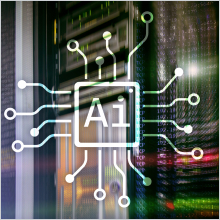
Adapt to AI Advancements and Embrace Human Oversight
While AI can significantly enhance cybersecurity, it is important to balance AI-driven solutions with human oversight. AI systems, while powerful, are not infallible. Human analysts bring contextual understanding and judgment that AI systems may lack, enabling a more comprehensive approach to threat detection and response. Organizations should establish protocols for human review of AI-driven alerts and decisions, ensuring that critical judgments are made with a blend of AI insights and human intuition.
Conclusion

AI is revolutionizing the field of cybersecurity, offering powerful tools that can enhance threat detection, automate responses, and adapt to new attack methods. By leveraging AI, organizations can improve their defenses and stay one step ahead of cybercriminals. However, AI’s transformative potential also brings new challenges, underscoring the importance of responsible implementation and ongoing vigilance.
For businesses today, staying secure means staying informed. As the landscape of AI-driven cybersecurity continues to evolve, it’s essential for organizations to proactively adopt and manage these technologies, ensuring that they align with ethical standards and complement human expertise. Companies must invest in continuous learning, conduct regular AI audits, and seek guidance from experts to maximize the benefits of AI while mitigating risks.
At Fit Solutions, we understand the immense potential of AI in strengthening cybersecurity strategies, and we’re committed to helping organizations navigate this dynamic environment. Now is the time to consider how AI could enhance your cybersecurity efforts. By embracing AI’s capabilities and taking a proactive approach, you can bolster your defenses and secure your organization’s digital future. Contact Fit Solutions to learn how AI can transform your cybersecurity strategy and protect your most valuable assets.
Contact us now and let’s get started!

